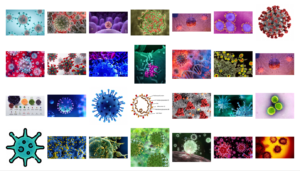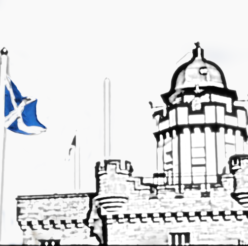Liz Stanley
Images of the coronavirus and Covid-19 specifically have become a familiar sight. A bunch of them, shown in the screenshots here, have been harvested from web sources over the period since mid-February – and for each one, a dozen more sits alongside it. But where do they come from, who owns them in a copyright sense, and what is their status in factual terms?

Following these images into Google-provided live-links regarding possible copyright matters yields a research or an organisational text or simply general information on copyright. Only rarely does an indication of ownership appear on the images, nor if or how they can be reproduced. Also the links, except very exceptionally, do not provide information about where and how the images have originated, whether by a graphic artist, whether through a process of actually photographing the coronavirus, some combination of these, or what. They are, rather than they have become, what Covid-19 looks like.
These images have become as familiar in the communicative spaces of media and television reporting as are street signs and billboard advertising in public places. And they are taken on trust even though they look so different. This is what it looks like. Oh, this is what it looks like. That is what it looks like. Here it is and it’s like this. Or that. Such images have become so familiar that the variations on the theme pass without comment. Where from and why the variations?
The gleaming eye of the tiger – and we casually and almost unseeingly stare into it, accepting, and with the questions not asked or not pursued.

One thought on “What does Covid-19 look like?”